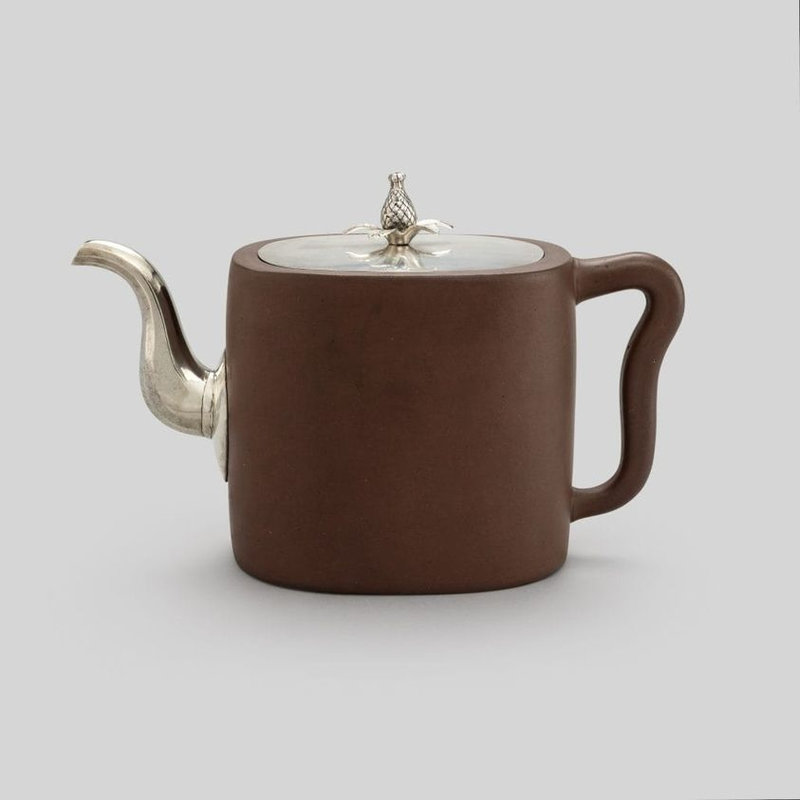Teapot, 1790. Yixing stoneware with English silver mounts
Teapot, 1790. Yixing stoneware with English silver mounts. Chitra Collection, no11. Photography by Karen Bengall © Chitra Collection.
This teapot was made in Yixing, China using the distinctive red clay for which the region is famous. Known as ‘purple sand’ or zisha, this clay fires to a variety of brown or red colours and is typically left unglazed. Although tea has been brewed in China from the 1300s, the first ‘official’ teapots are considered to be those made in Yixing in the 16th century. The fine texture of the clay as well as the thin walls of Yixing teapots are ideal for brewing tea as they allow the colour, smell and flavour of tea to absorb into the clay surface, which in turn develops a seasoning after repeated use. Yixing stoneware was much admired by the ruling classes and began to be exported to Europe in the late 17th century. The simple shape and lack of decoration indicate that this teapot was made specifically as export ware for the European market. It is also fitted with silver mounts that were added in England in around 1790. The finial on the teapot lid takes the shape of a pineapple, a fruit which was traditionally seen as a symbol of hospitality and exoticism in Georgian Britain.

/https%3A%2F%2Fprofilepics.canalblog.com%2Fprofilepics%2F1%2F0%2F100183.jpg)
/https%3A%2F%2Fstorage.canalblog.com%2F03%2F02%2F119589%2F96711876_o.jpg)
/https%3A%2F%2Fstorage.canalblog.com%2F11%2F31%2F119589%2F94773502_o.jpg)
/https%3A%2F%2Fstorage.canalblog.com%2F20%2F83%2F119589%2F94772815_o.jpg)
/https%3A%2F%2Fstorage.canalblog.com%2F26%2F72%2F119589%2F75604929_o.jpg)
/https%3A%2F%2Fstorage.canalblog.com%2F59%2F60%2F119589%2F26458628_o.jpg)



/http%3A%2F%2Fstorage.canalblog.com%2F42%2F97%2F119589%2F112749088_o.jpg)
/http%3A%2F%2Fstorage.canalblog.com%2F82%2F16%2F119589%2F96474434_o.jpg)
/http%3A%2F%2Fstorage.canalblog.com%2F81%2F57%2F119589%2F94578601_o.jpg)
/http%3A%2F%2Fstorage.canalblog.com%2F09%2F18%2F119589%2F94479283_o.jpg)